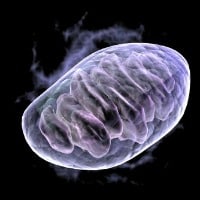University of Alabama researchers investigated how the levels of mitochondrial DNA decreases with age in some tissues, and have recently demonstrated that mitochondrial DNA depletion is involved in certain age related phenotypic changes.
A new mouse model was created in order to deplete their mitochondrial DNA by causing a mutation of the DNA polymerase which then becomes unable to replicate DNA; the mutation is only effective after ingestion of doxycycline. After ingestion there is then a decrease in the amount of mitochondrial DNA and, de facto, in mitochondrial activity throughout the entire body. The animal’s phenotypes gradually changed, within 4 weeks their hair was observed to become white and less dense leading to alopecia, and wrinkles on the skin and inflammation were observed to develop as well as weight loss, decrease in height, reduced movement and lethargy which are phenotypic traits characteristic of human aging.
Exhaustion of mitochondrial DNA led to the death of the animals; only 50% lived longer than 40 days after doxycycline ingestion, all survivors to day 30 experienced hair loss to the point of alopecia. Responses following ingestion were different between the genders: females experienced greater hair loss as well as more severe winkle formation which may be attributed to the influence of sex hormones that control mitochondrial function.
Rescue experiments consisting of removing doxycycline to restore function of the DNA polymerase were conducted to prove the phenotypic changes were due to mitochondrial DNA depletion. Rescue experiments restored the normal amount of mitochondrial DNA and reversed the phenotypic changes observed in the animals, normal appearance was recovered in about one month. Control mice not bearing mutation but treated with doxycycline or carrying mutated polymerase but not treated with doxycycline didn’t display aged phenotype.
According to the researchers, findings highlight the importance of maintaining mitochondrial functions for longevity, and analysis shows phenotypic changes were induced by depletion of mitochondrial DNA, which can be reversed by restoring mitochondrial function. Findings are believed to one day possibly lead to development of therapeutics against abnormalities linked to mitochondrial dysfunction, and development of preventive treatments against hair loss and wrinkles.




